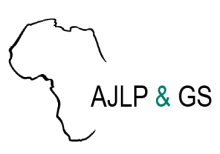Land Library Search
Through our robust search engine, you can search for any item of the over 73,000 highly curated resources in the Land Library.
If you would like to find an overview of what is possible, feel free to peruse the Search Guide.
/ library resources
Showing items 1 through 9 of 24.Spatio-Temporal Measurements Of Urban Sprawl Dynamics In Oyo Town, Nigeria
Ecuador’s Ministry of Environment, Water and Ecological Transition (MAATE) is using a Collect Earth Online through a service co-developed with EcoCiencia and SERVIR-Amazonia (an Alliance – led regional program) to improve forest monitoring data accuracy in the Ecuadorian Amazon and to validat
The acceleration of deforestation is one of the unexpected consequences of the signing of the Peace Agreement between the Colombian government and the FARC-EP guerrilla in 2016.
Crop type mapping is essential to agriculture applications, including yield estimates, crop planting acreage statistics, agricultural market predictions, and land use change analysis that support relevant decision-making. Since 2008, the U.S.
This chapter by Yuliani et al. begins with a brief description of the Adaptive Collaborative Management process that occurred in the early 2000s in the village of Baru Pelepat in Jambi province, Indonesia – a process facilitated by these authors.
Tropical deforestation is estimated to cause about one-quarter of anthropogenic carbon emissions, the second largest source of greenhouse gas emissions after fossil fuel combustion.
context and backgroundDespite the robustness of various land instruments and legal and institutional regulations on various sectors, Tanzania’s land distribution-related policy implementation and practice is facing numerous challenges.
This study aimed at modeling scenarios of future land use and land cover (LULC) change and estimating ecosystem service (ES) values for the year 2051 compared to 2021 in Central Ethiopia.
Banana (and plantain, Musa spp.), in sub-Saharan Africa (SSA), is predominantly grown as a mixed crop by smallholder farmers in backyards and small farmlands, typically ranging from 0.2 ha to 3 ha.


